Qualcomm Snapdragon 805 Performance Preview
by Anand Lal Shimpi on May 21, 2014 8:00 PM EST- Posted in
- Tablets
- Snapdragon
- Qualcomm
- Mobile
- SoCs
- Snapdragon 805
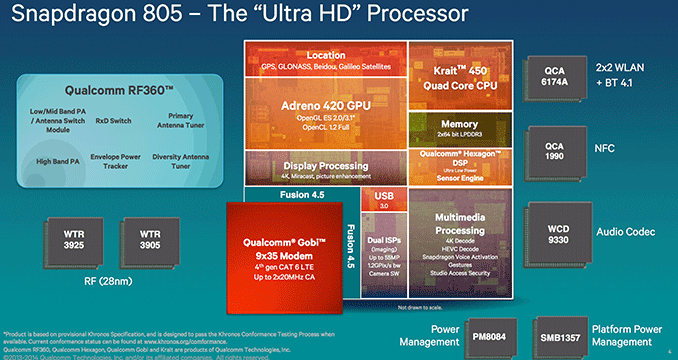
Last year Qualcomm announced a new tier in its high end SoC roadmap with the Snapdragon 805. Priced somewhat above the current Snapdragon 800/801, the 805 would be the last 32-bit high-end SoC from Qualcomm. It would be the grand finale in Krait's lineage, which started back in 2012 with Krait 200 and MSM8960 and saw iterative improvements over the years. The Snapdragon 805 was not only designed to drive CPU performance higher but also be the launch vehicle for Qualcomm's brand new Adreno 4xx GPU architecture.
The Snapdragon 805 SoC is a beast. It features four Krait 450 cores, each a mild tweak of the Krait 400 design used in the S800/801. These cores can now run at up to 2.7GHz compared to 2.5GHz in the Snapdragon 801 (Krait 400). As always, Qualcomm advertises customer-friendly frequencies rounded up to the nearest 100MHz, the actual max frequency of each Krait 450 core is 2.65GHz (compared to 2.45GHz in Krait 400).
The 8% increase in max frequency comes from tuning at the circuit level, there's no impact to IPC. All four cores sit behind a shared 2MB L2 cache. As is the case with all multi-core Krait SoCs, each CPU core can be power gated, clock gated and even clocked independently of the rest.
The S805 features Qualcomm's Adreno 420 GPU with full support for OpenGL ES 3.1 (with some extensions), OpenCL 1.2 and Direct3D feature level 11_2 (with a hardware tessellation engine). In typical Qualcomm fashion, it isn't disclosing any material details on the underlying Adreno 420 architecture so we'll have to guess based on what the benchmarks tell us. Adreno 420 includes support for Adaptive Scalable Texture Compression (ASTC), a new texture compression first introduced by ARM in 2011.
There are other architectural improvements including better texturing performance and faster depth rejection. The architecture should be more efficient than Adreno 3xx as well, making better use of the underlying hardware.
The GPU runs at a max frequency of 600MHz.
Qualcomm claims a 20% reduction in power consumption compared to Adreno 330 (Snapdragon 800) when running the T-Rex HD test from GFXBench at 1080p (onscreen).
For the first time, the GPU now gets its own direct path to the SoC's memory interface. In the past the GPU shared a bus with the ISP and video engines, but in order to feed the beast that had to change. The memory interface on S805 features two 64-bit LPDDR3-800 partitions (4 x 32-bit external interfaces), each capable of supporting 1600MHz datarate LPDDR3 for an aggregate peak theoretical bandwidth figure of 25.6GB/s. The Krait 450 cores themselves aren't big enough to use all of that memory bandwidth. The wide memory interface is really there for the GPU and video engines. We haven't seen a memory interface this wide on a mobile SoC since Apple's A5X/A6X designs.
In order to accommodate the wider memory interface but still make Snapdragon 805 suitable for use in a smartphone as well as a tablet, Qualcomm turned to a different packaging technology. Since the Snapdragon 805 is an APQ part, it lacks the integrated modem of the MSM SoCs we've found in most of Qualcomm's recent flagships. S805 uses a Moulded Embedded Package (MEP) that allows Qualcomm to route its 128-bit wide memory interface to on-package DRAM, giving it all of the benefits of a PoP stack as well as the wider memory interface. Qualcomm wouldn't provide me with a ton of details on MEP other than to say that rather than using the perimeter of the SoC's package to connect to memory stacked above it, MEP uses a substrate layer on top of the SoC to connect to the memory, giving the SoC more surface area to route lines to the DRAM. Qualcomm also claims the amount of metal it uses in the DRAM's substrate layer has some small impact on improving thermals on the overall package. The result is that Snapdragon 805 is still compact enough to go into a smartphone as long as the design can accomodate a discrete modem.
The Snapdragon 805 also marks Qualcomm's first SoC with a hardware H.265/HEVC video decode engine. There's no hardware H.265 encode acceleration however, that won't come until Snapdragon 810 in 2015.
The S805's ISP sees an increase in performance as well. The SoC retains Qualcomm's dual-ISP design, now capable of pushing up to 1.2 Gigapixels/s through the engine. If Qualcomm arrives at that number the same way as it has in the past, that would imply a 600MHz ISP operating frequency (up from 465MHz in the Snapdragon 801). The new ISP supports up to four MIPI camera inputs (TrioCam + FF anyone?). The ISP can support 4k30 and 1080p120 video capture.
Qualcomm also claims improved autofocus performance and better noise reduction.
Just as in years past, Qualcomm invited us out to a benchmarking workshop to get some hands on time with its Snapdragon 805 Mobile Development Platform (MDP) ahead of actual device availability. And just like we saw with the Snapdragon 800 benchmarking workshop, the S805's MDP comes in tablet form.the Snapdragon 805 MDP/T features a 10.6" 2560 x 1440 display, 3GB of LPDDR3 memory and 64GB of internal storage (eMMC 5.0). The chassis looks very similar to previous MDP/T designs.
Just as before, the benchmarks that follow are of a pre-production device that isn't shipping hardware. Although Qualcomm has significantly improved the delta we've seen between MDPs and shipping devices, there's always the caveat that performance could be different once we are looking at a shipping device, running on battery power. Although Qualcomm gave us access to the MDP/T, the devices were running on AC power with no power instrumentation connected. Qualcomm's own data shows a reduction in power consumption for Snapdragon 805 vs. 800, but once again we'll have to wait for shipping devices to really understand the impact of the SoC on battery life. What follows is exactly what the title of this piece indicates: a preview of Snapdragon 805 performance. Although Qualcomm pre-loaded the MDP/T with some commonly used benchmarks, we installed our own copies of everything we ran.
| Qualcomm's Snapdragon 8xx Lineup | |||||||
| Snapdragon 810 | Snapdragon 808 | Snapdragon 805 | Snapdragon 801 | Snapdragon 800 | |||
| Internal Model Number | MSM8994 | MSM8992 | APQ8084 | MSM8974 v3 | MSM8974 v2 | ||
| Manufacturing Process | 20nm | 20nm | 28nm HPm | 28nm HPm | 28nm HPm | ||
| CPU | 4 x ARM Cortex A57 + 4 x ARM Cortex A53 (big.LITTLE) | 2 x ARM Cortex A57 + 4 x ARM Cortex A53 (big.LITTLE) | 4 x Qualcomm Krait 450 | 4 x Qualcomm Krait 400 | 4 x Qualcomm Krait 400 | ||
| ISA | 32/64-bit ARMv8-A | 32/64-bit ARMv8-A | 32-bit ARMv7-A | 32-bit ARMv7-A | 32-bit ARMv7-A | ||
| GPU | Adreno 430 | Adreno 418 | Adreno 420 | Adreno 330 | Adreno 330 | ||
| H.265 Decode | Yes | Yes | Yes | No | No | ||
| H.265 Encode | Yes | No | No | No | No | ||
| Memory Interface | 2 x 32-bit LPDDR4-1600 | 2 x 32-bit LPDDR3-933 | 4 x 32-bit LPDDR3-800 | 2 x 32-bit LPDDR3-800/933 | 2 x 32-bit LPDDR3-800/933 | ||
| Integrated Modem | 9x35 core, LTE Category 6/7, DC-HSPA+, DS-DA | 9x35 core, LTE Category 6/7, DC-HSPA+, DS-DA | - | 9x25 core, LTE Category 4, DC-HSPA+, DS-DA | 9x25 core, LTE Category 4, DC-HSPA+, DS-DA | ||
| Integrated WiFi | - | - | - | - | - | ||
| eMMC Interface | 5.0 | 5.0 | 5.0 | 5.0 | 4.5 | ||
| Camera ISP | 14-bit dual-ISP | 12-bit dual-ISP | 1.2 GP/s | 930 MP/s | 640 MP/s | ||
| Shipping in Devices | 1H 2015 | 1H 2015 | 2H 2014 | Now | Now | ||
I pulled comparison results from our new combined Phone/Tablet 2014 category in Bench. The key comparisons here are the iPad Air (for obvious reasons), ASUS' Transformer Pad TF701T (Tegra 4 in a tablet), ASUS' Transformer Book T100 (Intel's Bay Trail in a tablet) and the HTC One (M8)/Samsung Galaxy S 5 (both are Snapdragon 801 devices). With the exception of the Bay Trail based T100, everything else runs iOS or Android.



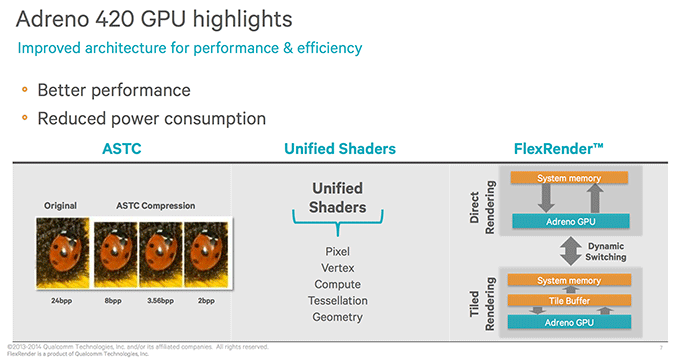
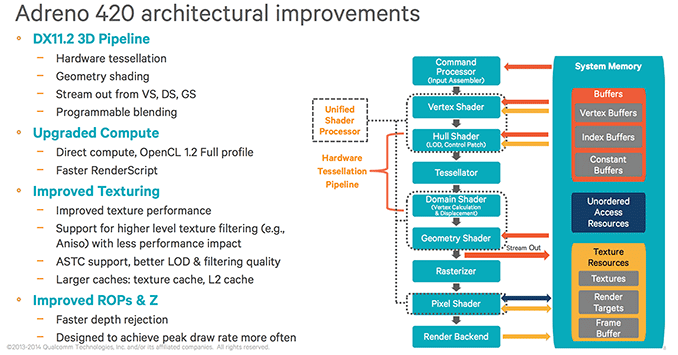
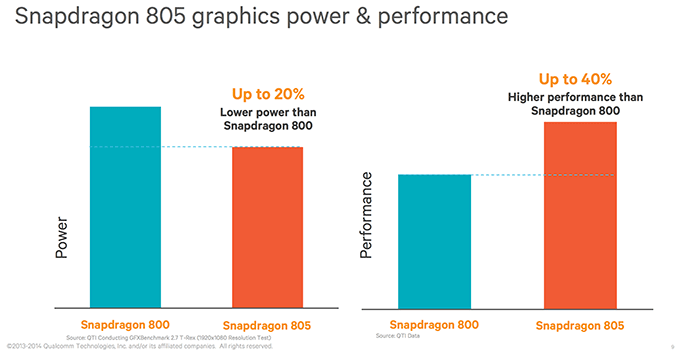
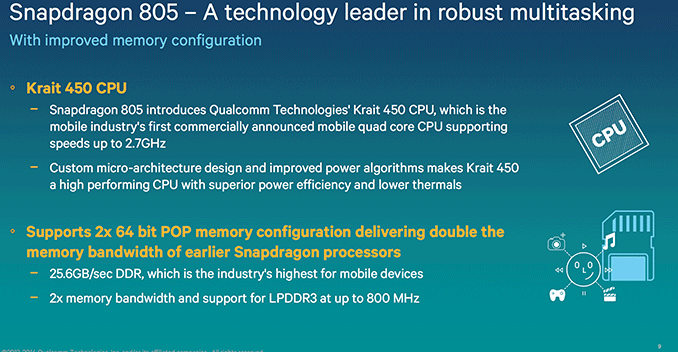
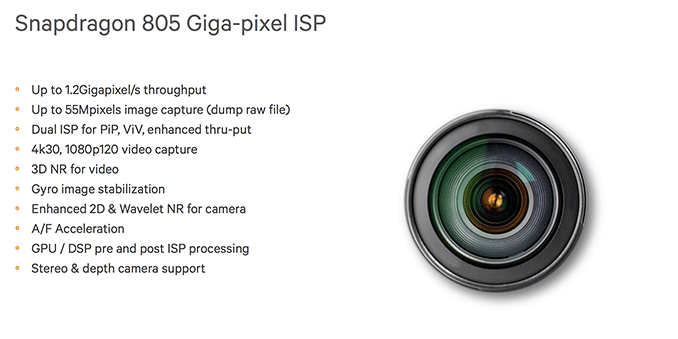
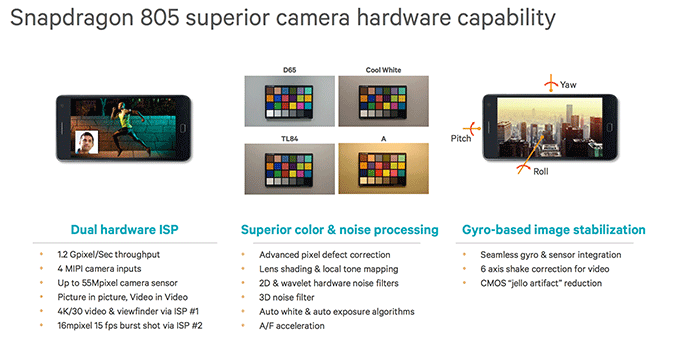

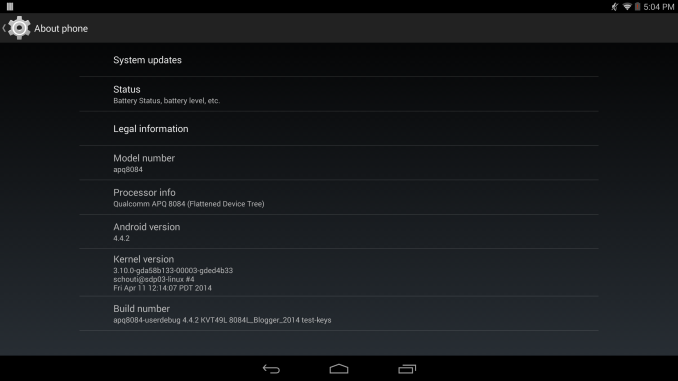








149 Comments
View All Comments
leexgx - Monday, May 26, 2014 - link
the stock browser is normally not Chrome (unless its Pure Android device or Sony phone) its normally the webkit browser? (not checked what its called)i find chrome a power hog (i use Opera mini most of the time any way that infact is for most part worst then the stock android browser, but strips all scripts from the website so you get a static page no CPU use or lag at all)
akdj - Wednesday, May 21, 2014 - link
I'm not sure where you got your S5...I've got an S5 and Note 3. BOTH are MUCH quicker with Chrome, Dolphin, Mercury...or any numerous third party browsers than the crappy Samsung 'stock' "Internet" browser. It's CRAP! If there's a link you could share with the stock Sammy browser 'beating' the latest iOS device benchmarks on the A7/IT platform. Sorry, but as a LONG time TouchWiz owner and user it's definitely the FIRST omitted 'default' option. Then. Keyboard;)Don't worry. Sounds like you seem to think someone is going to buy their phone based off a Sunspider test only? That doesn't make any sense. While the iOS platforms with the A7 are certainly holding their own eight months after release, the tests I eras were definitely not dominated by the iOS silicon right now. I own the iPhone 5s and Air and can honestly say regardless of benchmark results or numbers, tests and objective reviews, the iOS devices generation compared to the same generation of TouchWiz FLATTEN the latter when it comes to browsing speed, UI fluidity and overall general 'speed'. My wife has the iPhone 5 and the Samsung S5. Me the 5s and Note3. It's irrelevant which browser you use, iOS is definitely the quicker populating browser (I actually prefer iCab IR Mercury to Safari...regardless of Apples' decision to not allow access to Nitro, they're JUST as quick). While I LOVE my Note for the actual browsing 'experience' in comparison to the iPhone, the intrigue for me is the larger display and the ability to use the stylus for sketching rigging points for clients, credit cards and my old eyes. I love em both but there's NO WAY without a link you're gonna convince me that POS stock Sammy browser beats ANYTHING! Lol. Android. iOS. I'm a fan of both. BUT some things are better on one or the other's OS, UI and overall compatibility with whatever tools you're using.
Sorry. Others have beat me to it. Took to long. Android is MASSIVE ...And while Samsung makes up a large percentage of 'sales' they're not all flagships. Tons of 2.xx devices still on the market and pay by month kiosks, other countries, etc. not all Sammy's have the same TouchWiz browser nor do ANY of the other OEMs. Chrome, by default...it's Google (Android's) true 'stock' browser and it's a helluva lot faster than the crap that comes with TW. I've found Dolphin and Merc to be my faves, simply because Chrome still doesn't allow text resizing
J
sachouba - Thursday, May 22, 2014 - link
My Samsung Galaxy S5 has a score of 391ms at Sunspider using the stock browser from Samsung and ART Runtime. This stock browser used to be crap, but the new version of it coming with the Galaxy S5 has been really improved. I used to use Chrome instead of it, but now Samsung's stock browser is far faster.Kidster3001 - Thursday, May 22, 2014 - link
Browser benchmarks are in no way a good benchmark of CPU performance, even with the same browser on different devices. Browser benchmarks test many things. Raw CPU performance is not one of them.Flunk - Thursday, May 22, 2014 - link
I think you might not know what your'e talking about. The Samsung Android browser just uses the old Android Opensource project stack. It's not very standards compliant and pretty slow. A lot of web applications don't ever support it anymore.darkich - Friday, May 23, 2014 - link
Exactly.Galaxy S5 with STOCK (Samsung) browser scores way better than on Chrome.
A record-setting 370ms on Sunspider!
Note 3 gets around 500ms.
Uselless and very biased job, Anand
rubene66 - Wednesday, May 21, 2014 - link
Snapdragon always slow web browsing tegra k1 will be bettertipoo - Wednesday, May 21, 2014 - link
Is the RAM package on package, or is it right in the die as the first image implies?tipoo - Wednesday, May 21, 2014 - link
I'm guessing if that is an actual die shot, it's just the interface to the RAM, as the RAM would have to be bigger.mavere - Wednesday, May 21, 2014 - link
So no 20nm Snapdragons until 2015?Is anyone besides Apple expected to have a 20nm mobile SoC on the market this year?